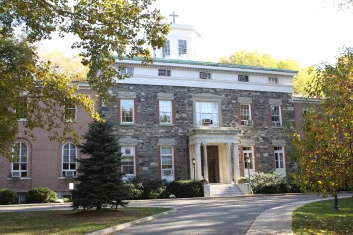
CUSP recently released a draft of a new strategic framework for the university.
By Laura Sanicola
Almost one year after Rev. Joseph M. McShane, S.J., president of the university, announced he was creating a new strategic plan for teh university, Fordham’s Continuous University Strategic Planning Committee (CUSP) released a draft of a new strategic framework for the university. The draft outlined “strategic priorities” related to Jesuit teaching, utilizing New York City, strategically focused research, global engagement and the creation of a diverse and inclusive community and a strategic institution. The draft was advertised to the Fordham community via a university-wide email. A link to the full document is also available on the my.fordham homepage under University Featured Links.
“If this works, what it will lead to is a stronger Fordham,” Dr. Peter Stace, co-chair of the CUSP committee said at a town hall meeting to review the draft.
To co-chair the intiative created by McShane, the university president appointed several longtime faculty members and administrators.
Stace, along with Dr. Patrick Hornbeck, chair of the theology department, and Dr. Debra McPhee, dean of the Graduate School of Social Service, comprise CUSP’s leaders. The committee began meeting in October to develop the framework.
CUSP is intended to follow Towards 2016, a strategic plan for the university created by McShane in 2006.
Towards 2016 achieved some of its set benchmarks, such as raising Fordham’s population of minority and international students to 30 percent of the student body. However, several others, such as substantially reducing the university’s acceptance rate and maintaining average SAT scores for the accepted student body in the 1350-1400 range, were not reached.
Notably, Towards 2016 set a target to raise the university’s endowment to $2 billion by 2016. The university fell short of that goal as the current endowment is $665 million, approximately 35 percent of the original goal for 2016.
The draft released by CUSP in mid-March lacks the benchmarks that characterized Towards 2016 and is intended to be assessed every five years, not 10. Jonathon Crystal, the associate vice president of academic affairs, said that this allows the university more flexibility in responding to unexpected circumstances.
“The world changes so much in 10 years,” he said. “When Towards 2016 was created, who knew that law school enrollments would fall off the way they have, and that business would become such an attraction for college students?”
At the town hall meeting, which took place on March 30 in the Flom auditorium, the CUSP co-chairs explained the draft in detail to those in attendance. Only two students were at the meeting, which was publicized via university-wide email.
The draft’s broader aspirations are to “establish Fordham as a highly competitive research institution in strategically defined areas” and “establish Fordham as a thought-leader about the world’s most critical challenges.”
More tangible goals are to add a chief diversity and inclusion officer reporting to the president and to plan and design a new campus center and an interdisciplinary science building on the Rose Hill campus.
Fordham faculty and CUSP co-chairs agreed that the priorities would likely require the university to find sources of revenue other than tuition. Student tuition currently accounts for between 92 and 94 percent of all Fordham’s revenue, according to the Board of Trustees.
“To the extent that our aspirations have to be funded… if all [the plans] come out of tuition, it’s really concerning,” Hornbeck said at the town hall meeting.
Creating a sustainable business model falls under the sixth priority of the draft, an item which some at the town hall meeting argued should be first.
“Item six is something without which the other things are not possible,” Hornbeck said.
Other faculty in attendance voiced concern that the language of the draft was centered on innovation as opposed to cultivating wisdom and knowledge. Still more debated the order of each of the priorities as they were listed in the document, including the separation of teaching and research.
The most highly debated points, however, were how to accomplish a less tuition-based business model and how to increase and better support faculty research and intertwine it with student learning.
The committee members plan to share framework and planning design with Fordham senior leadersBoard of Trustee members, Faculty Senate and selected external stakeholders. After they revise the framework and the continuous planning process draft they will discuss the revised draft with the Board of Trustees at their April Board meeting. The group will submit a final Strategic Framework and planning process in September, when it will be voted on by the trustees.
